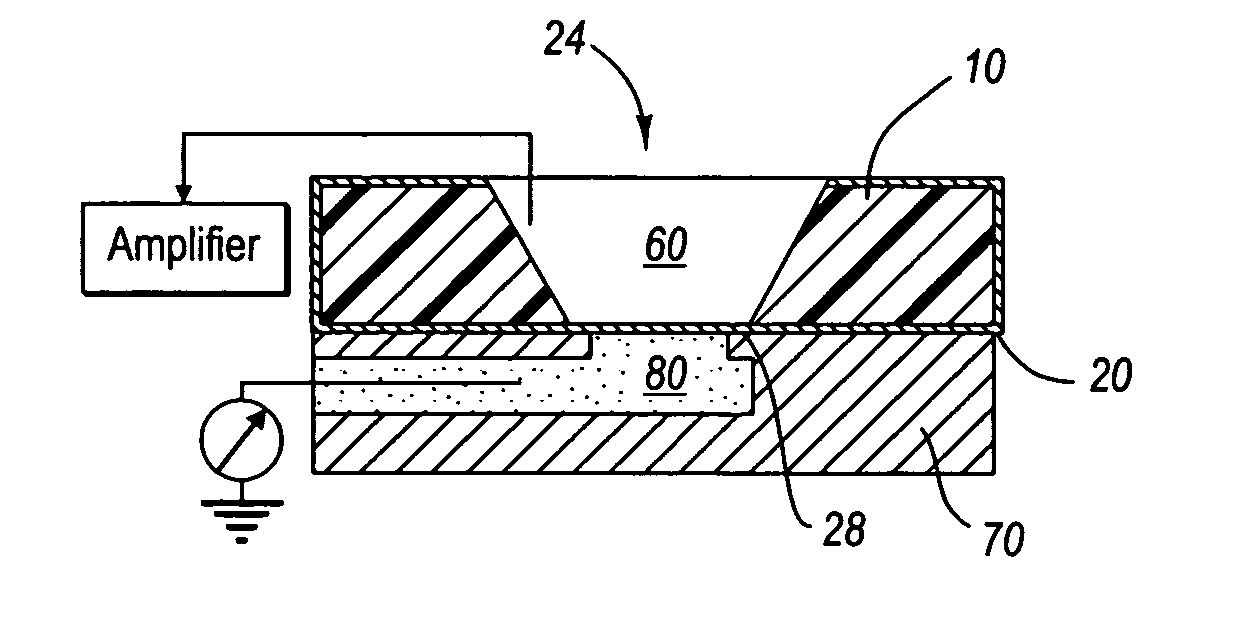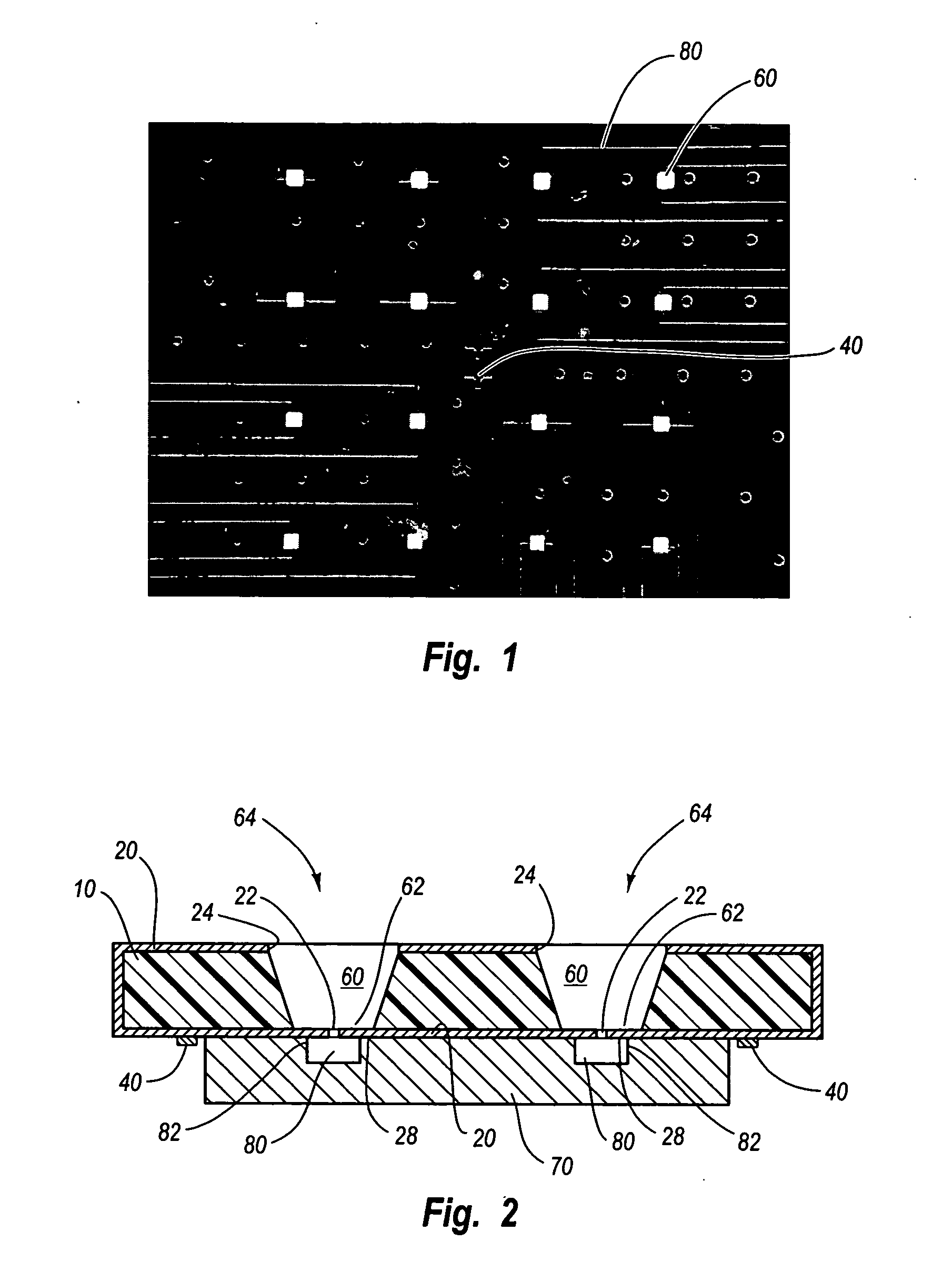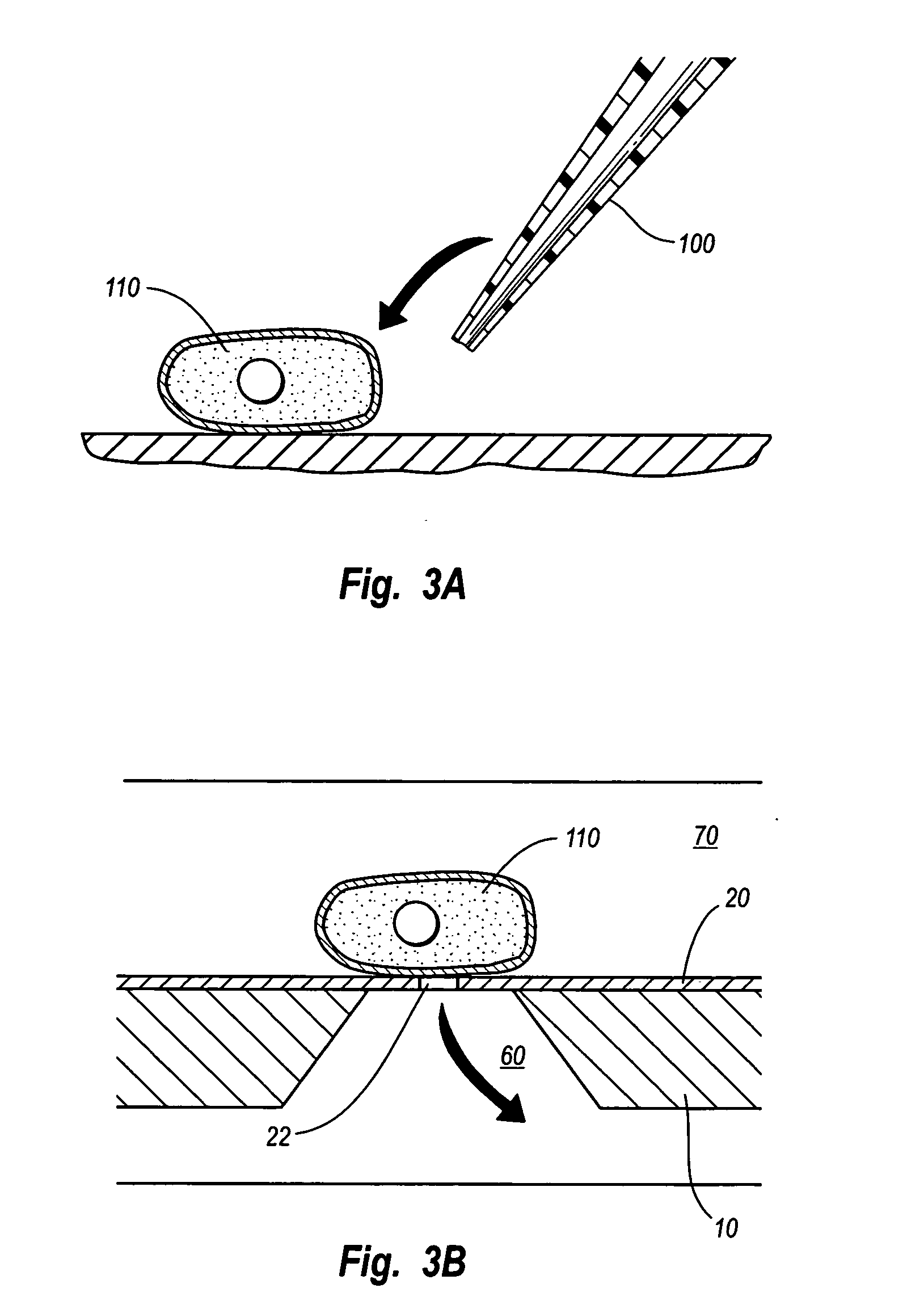Microwell arrays with nanoholes
a nano-hole and microwell technology, applied in the field of microwell arrays with nano-holes, can solve the problems of inconvenient and bulky implementation into parallel analysis automated systems, insufficient chemically sensitive or physically capable of obtaining single cell measurements, etc., and achieves low noise electrical measurements, high-resolution delivery, and high precision.
- Summary
- Abstract
- Description
- Claims
- Application Information
AI Technical Summary
Benefits of technology
Problems solved by technology
Method used
Image
Examples
example 1
[0089]FIG. 15A is a cross-sectional view of a device comprising a silicon wafer 10 defining a microwell 60. A PDMS layer 70 with a microchannel 80 is positioned with the microchannel aligned with a microwell 60. Membrane layer 20 does not have a nanohole below microwell 60. FIG. 15B is a top view of the device shown in FIG. 15A. Test experiments were conducted using this device to determine whether it provides results comparable to a traditional patch-clamp set-ups. The microwells and microchannels were filled with electrolyte fluid. A square-wave voltage pulse was applied between microwell and the microchannel. Electrical resistance and capacitance were measured. The results of the experiments are shown in FIG. 15C. In the absence of a nanohole the current did not flow, showing that the suspended silicon nitride layer provides a good insulation.
example 2
[0090]FIG. 16A is a cross-sectional view of a device similar to the device described in connection with FIGS. 15A-15B except that membrane 20 defines a 1 μm nanohole 22 between microwell 60 and microchannel 80. FIG. 16B is a top view of the device shown in FIG. 16A. Electrical characterization of this setup was conducted in accordance with the protocol described above for Example 1. The results are shown at FIG. 16C. The resistance and capacitance values were comparable to micropipette resistance with a tip diameter of 1 μm.
example 3
[0091]FIG. 17A is a cross-sectional view of a device similar to the device described in connection with FIGS. 16A-B except that microchannel 80 is misaligned with microwell 60. FIG. 17B is a top view of the device shown in FIG. 17A. Electrical characterization of this setup was conducted in accordance with the protocol described above for Example 1. The results are shown at FIG. 17C. The results indicate that there was cross-talk or interference between the two electrodes of the amplifier through the silicon-backed (unsuspended) silicon nitride layer and the bulk silicon.
[0092] These examples illustrate that the device shown in FIGS. 16A-16B is optimized for patch-clamping applications.
PUM
| Property | Measurement | Unit |
|---|---|---|
| size | aaaaa | aaaaa |
| diameter | aaaaa | aaaaa |
| size | aaaaa | aaaaa |
Abstract
Description
Claims
Application Information
 Login to View More
Login to View More - R&D
- Intellectual Property
- Life Sciences
- Materials
- Tech Scout
- Unparalleled Data Quality
- Higher Quality Content
- 60% Fewer Hallucinations
Browse by: Latest US Patents, China's latest patents, Technical Efficacy Thesaurus, Application Domain, Technology Topic, Popular Technical Reports.
© 2025 PatSnap. All rights reserved.Legal|Privacy policy|Modern Slavery Act Transparency Statement|Sitemap|About US| Contact US: help@patsnap.com



